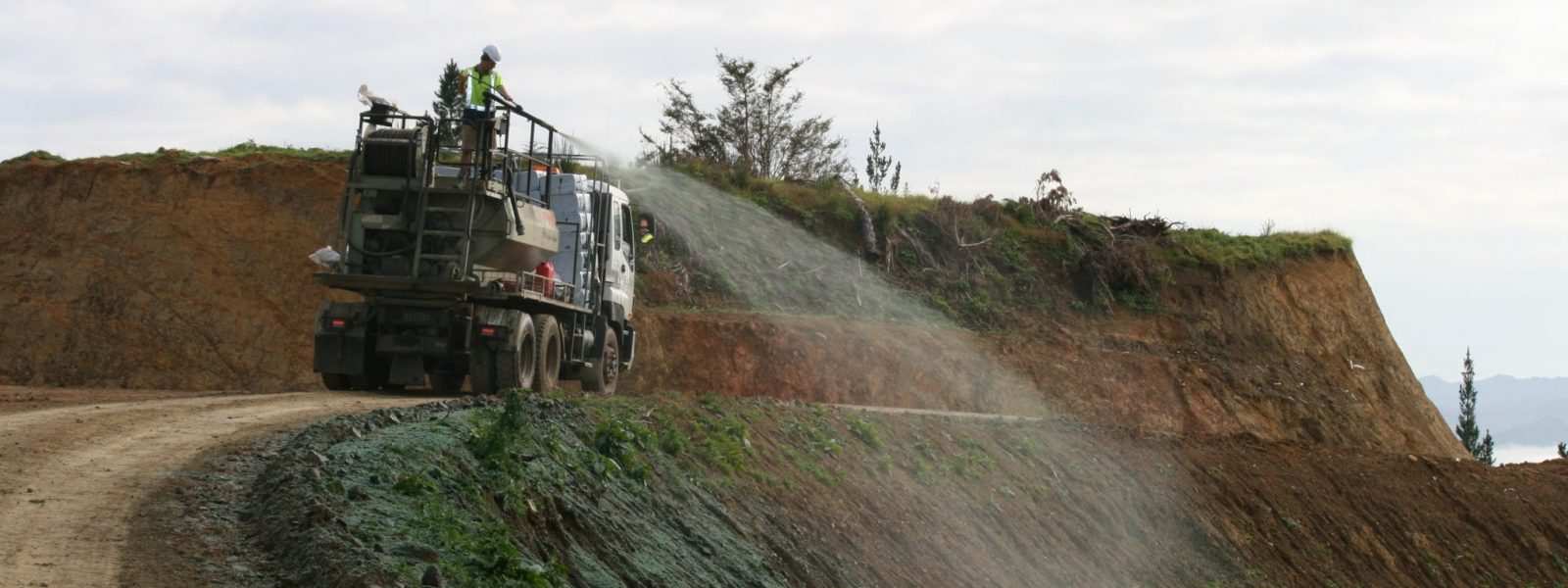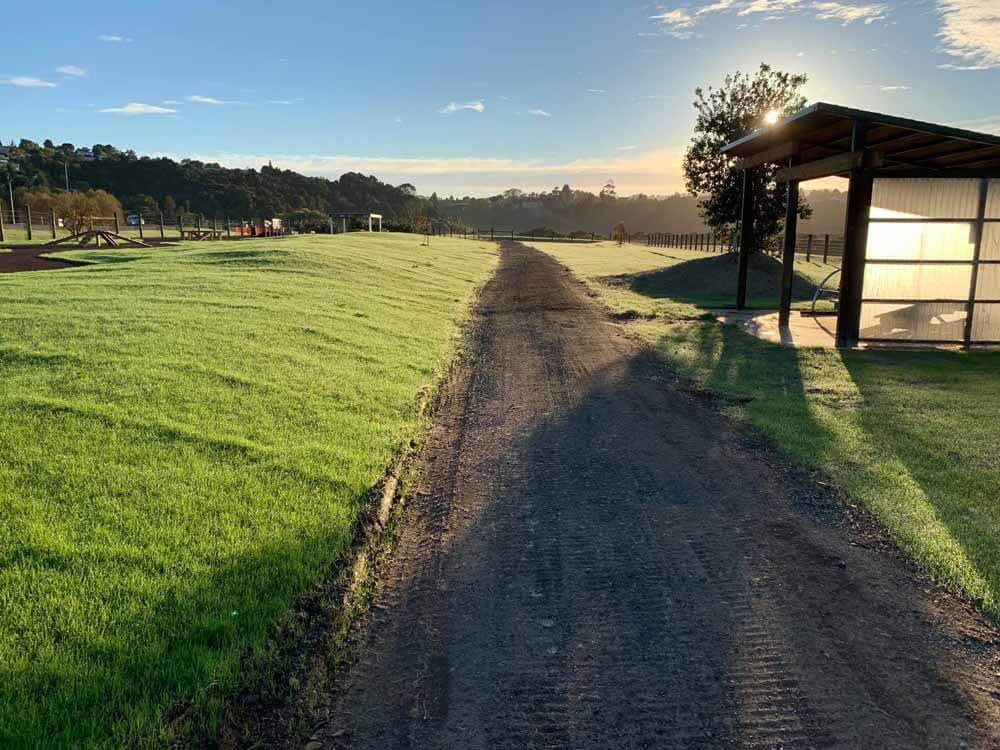Forestry powers much of Aotearoa’s regional economy. However, the industry’s heavy machinery, unsealed haul roads, and timber processing can release large volumes of dust. Fine particles harm worker health, damage equipment, and trigger complaints from neighbours to the local iwi. They also create compliance risk under WorkSafe NZ regulations and regional air-quality plans. This guide outlines practical, proven methods for dust suppression on forestry sites while supporting productivity and sustainability.
Why Dust Control Matters in Forestry
- Health and safety: Wood dust and road dust can carry particles small enough to lodge deep in the lungs, contributing to breathing issues such as asthma or COPD.
- Operational efficiency: Dust clouds cut visibility on skid sites and haul roads, slowing traffic and raising the risk of collision. They also clog air intakes and filters, accelerating wear on engines and hydraulics.
- Environmental stewardship: Fugitive dust settles on waterways, smothers vegetation, and breaches the National Environmental Standards for Commercial Forestry (NES-CF) if not controlled
- Regulatory compliance: Under the Health and Safety at Work Act, Persons Conducting a Business or Undertaking (PCBUs) must eliminate or minimise airborne contaminants so far as reasonably practicable.
Common Sources of Dust in a Forestry Site
- Unsealed haul roads traversed by harvesters, forwarders, and log trucks.
- Skid-site earthworks during landing construction and silviculture.
- Mechanical processing such as debarking, chipping, and milling.
- Log stockpiles and dry slash exposed to wind.
- Vehicle movements in dry summer conditions.
Rules and Exposure Limits
WorkSafe NZ sets an inhalable softwood dust Workplace Exposure Standard (WES-TWA) of 2 mg m³, but recent sawmill research shows lung-function decline at average exposures of 0.6-0.8 mg m³, so aiming well below the legal limit is prudent.
Regional councils apply trigger values for total suspended particulate (TSP) and PM₁₀ under the MfE Good Practice Guide for Assessing and Managing Dust. Exceedances can lead to abatement notices or consent shutdowns.
The NES-CF also requires forestry operators to manage sediment and dust so that adverse effects are mitigated at source.
Proven Dust-Control Strategies for Forestry Operations
1. Vegetative Cover (Long-Term)
Replanting haul-road batters and decommissioned skid sites with deep-rooted grasses and nurse crops stabilises soil, cuts wind speed, and provides year-round dust suppression at low ongoing cost. Establish quickly using hydroseeding with a certified seed mix matched to local soil and climate.
2. Water Cart Spraying (Short-Term)
Tankers and sprinklers deliver an instant drop in visible dust, ideal for high-traffic days or during log-truck loading. Limitations: frequent re-sprays and high water consumption in drought-prone regions. A smart trigger-based system that only sprays above a PM₁₀ set point can reduce use.
3. Organic Mulches and Straw-Blowing
A 50-100 mm layer of straw or wood chip on exposed subgrade insulates soil, traps fines, and promotes moisture retention. Best for newly formed landings awaiting rework or planting.
4. Polymer and Lignin-Based Suppressants
Modern binders and resin emulsions penetrate the surface and lock fines together, giving three to twelve months of control on unsealed forest roads. They cut watering costs by up to 80% and are non-corrosive, unlike chloride salts.
5. Mechanical and Engineering Controls
- Road design: Crown the running surface to shed water and add suitable metal to reduce fines, following the NZ Forest Road Engineering Manual.
- Speed management: Enforce limits and fit GPS governors to log trucks to keep dust generation down.
- On-tool extraction: In woodyards and workshops, fit local exhaust ventilation at saws, planers, and sanders to capture wood dust at the source.
6. Administrative and PPE Measures
Rotate high-exposure tasks, schedule haulage outside peak wind times, and issue fit-tested P2 masks for tasks like chipper maintenance or baghouse cleaning. Keep washing stations close to dusty areas so your crew can de-dust before going to lunch.
Implementation Blueprint
- Baseline Monitoring: Measure current PM₁₀ and TSP to identify hotspots; use personal sampling pumps to confirm wood-dust exposure levels.
- Dust Management Plan: Align controls with NES-CF and regional plan conditions; integrate into your existing environmental management system.
- Product Selection: Choose an ISO-accredited, biodegradable dust suppressant with proven forestry performance data.
- Application and Inspection: Apply at the right moisture content, then audit every fortnight, topping up as required.
- Review and Report: Track PM trends, maintenance savings, and incident reports to demonstrate continual improvement to auditors and regulators.
Cost and Sustainability Benefits
An integrated programme that combines road stabilisation and polymer suppressants can:
- Cut water truck fuel and labour costs by up to two-thirds.
- Extend road metal life and reduce grader passes by binding surface fines.
- Lower machinery downtime due to clogged filters and overheating.
- Improve ESG performance by reducing particulate emissions and conserving water.
Why Partner with Enviro360
Enviro360 has delivered dust suppression and erosion control for forestry clients from Northland to Waikato. Our ISO-accredited, environmentally neutral products bind fines for up to twelve months, while our hydroseeding crews ensure fast vegetative cover for decommissioned landings. With a 100% satisfaction guarantee and responsive after care, you can focus on harvesting while we keep the dust down.
Call 09 435 0755 or enquire online to discuss a tailored forestry dust-control plan.

